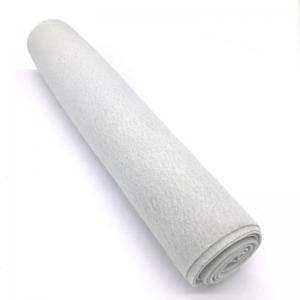1. Stabilization In stabilization, the fabric is applied on top of a material that
is highly compressible. Most often, this material is wet, soft
soil. Here, the geotextile allows water to seep from the soft soil
to draining material. As a result, it consolidates the basement
layer, thus strengthening it and making it a more trustworthy base.
2. Separation Fabric is laid between two layers of different materials, such as
two different soil types, new construction, and soil, or new and
old pavement. Separation is sometimes used interchangeably with
stabilization, but there are fine distinctions.
3. Filtration Using geotextile infiltration is similar to using in
stabilization. The main aim in both cases is to allow the passage
of water from the covered layer. The goal of this application is to
remove water while preventing soil and or any other fine particles
from passing through. This is achieved in combination with a filter
behind the geotextile. In this process, water is removed, rather
than being filtered into a different material.
4. Moisture Barrier This application is almost the direct opposite of the above
applications. In the moisture barrier, the geotextile is used to
block water rather than allowing water to pass through. This is
accomplished by applying an asphaltic suspension. As a result, the
fabric becomes impermeable and suitable for use in construction
projects such as pavement rehabilitation.
5. Drainage Geotextile material can help gather water or gas and then
transport it along its plane, therefore providing seamless
transmission. This process is what is traditionally called drainage
function, which can be highly effective in chimney drains as well
as drip drains.
6. Reinforcement In reinforcement, the geotextile acts as a source of strength
instead of strengthening the bottom layer like in stabilization.


